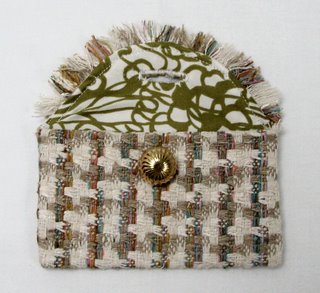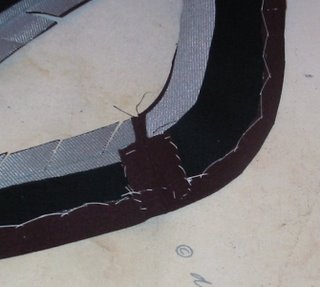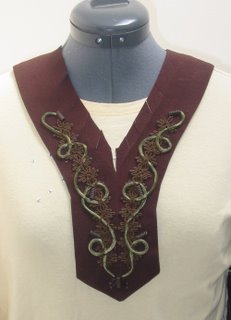
Here are some detail photos of the tiny bags I posted to the The Sewing Divas blog. The "Chanel" bag has a silk twill lining and the fringe is a strip of bias cut fabric stitched to the flap.

The Asian bag is made from a remnant of indigo dyed cotton. It has a silk twill lining that is s scrap from a vintage kimono. A wonderful littel company called Ah Kimono! They sell color cooredianted packs of authentic Japanese silks and cottons.

The folk art bag is made from wool felt and is embellished with machine embroidery. No lining is needed with wool felt but a stabilzer for the embroidery is still a good idea.
If you'd like a free PDF pattern & instuctions for this tiny bag, just email the Divas at thesewingdivas@hotmail.com and I'll send you a PDF of the pattern and instructions.






